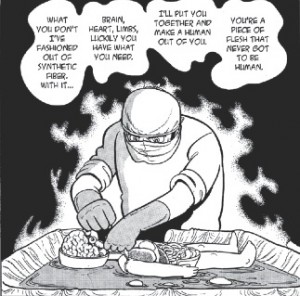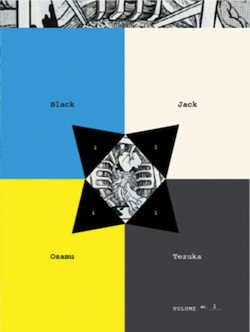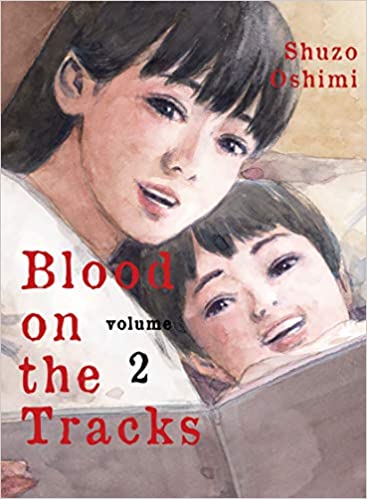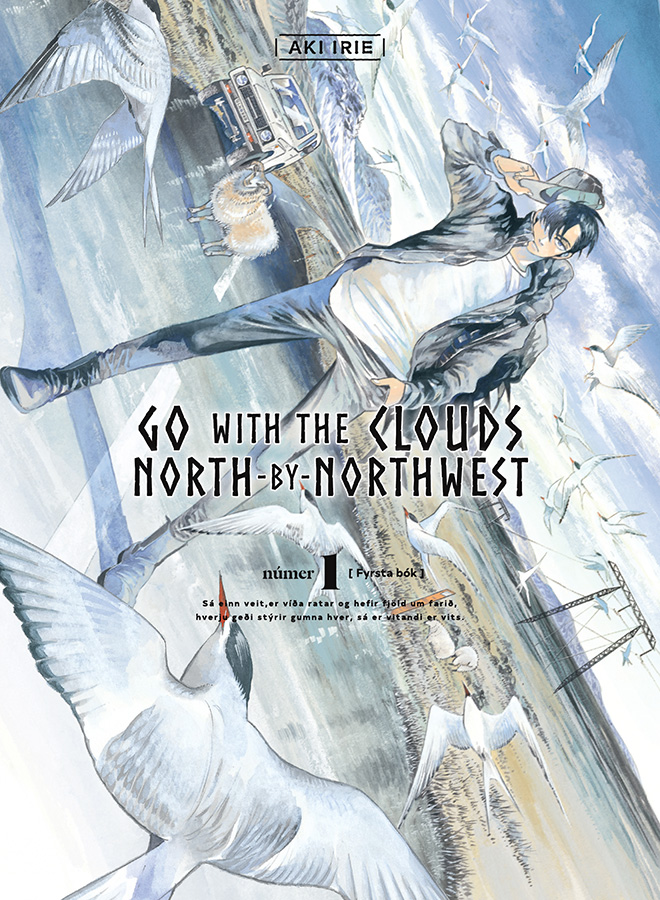Black Jack practices a different kind of medicine than the earnest physicians on Grey’s Anatomy or ER, taking cases that push the boundary between science and science fiction. In the first two volumes of Black Jack alone, the good doctor tests his surgical mettle by:
- Performing a brain transplant
- Separating conjoined twins
- Operating on a killer whale
- Operating blind
- Operating on a man who’s been hit by a bullet train
- Operating on twelve patients at once… without being sued for medical malpractice.
Osamu Tezuka’s own medical training is evident in the detailed drawings of muscle tissue, livers, hearts, and brains. Yet these images are beautifully integrated into his broad, cartoonish vocabulary, making the surgical scenes pulse with life. These procedures get an additional jolt of energy from the way Tezuka stages them; he brings the same theatricality to the operating room that John Woo does to shoot-outs and hostage crises, with crazy camera angles and unexpected complications that demand split-second decision-making from the hero.
 At the same time, however, a more adult sensibility tempers the bravado displays of surgical acumen. Black Jack’s medical interventions cure his patients but seldom yield happy endings. In “The Face Sore,” for example, a man seeks treatment for a condition that contorts his face into a grotesque mask of boils. Jack eventually restores the man’s appearance, only to realize that the organism causing the deformation had a symbiotic relationship with its host; once removed, the host proves even more hideous than his initial appearance suggested. “The Painting Is Dead!” offers a similarly bitter twist, as Jack prolongs a dying artist’s life by transplanting his brain into a healthy man’s body. The artist longs to paint one final work — hence the request for a transplant — but finds himself incapable of realizing his vision until radiation sickness begins corrupting his new body just as it did his old one. Jack may profess to be indifferent to both patients’ suffering, insisting he’s only in it for the money, but that bluster conceals a painful truth: Jack knows all too well that he can’t heal the heart or mind.
At the same time, however, a more adult sensibility tempers the bravado displays of surgical acumen. Black Jack’s medical interventions cure his patients but seldom yield happy endings. In “The Face Sore,” for example, a man seeks treatment for a condition that contorts his face into a grotesque mask of boils. Jack eventually restores the man’s appearance, only to realize that the organism causing the deformation had a symbiotic relationship with its host; once removed, the host proves even more hideous than his initial appearance suggested. “The Painting Is Dead!” offers a similarly bitter twist, as Jack prolongs a dying artist’s life by transplanting his brain into a healthy man’s body. The artist longs to paint one final work — hence the request for a transplant — but finds himself incapable of realizing his vision until radiation sickness begins corrupting his new body just as it did his old one. Jack may profess to be indifferent to both patients’ suffering, insisting he’s only in it for the money, but that bluster conceals a painful truth: Jack knows all too well that he can’t heal the heart or mind.
The only thing that dampened my enthusiasm for Black Jack was the outdated sexual politics. In “Confluence,” for example, a beautiful young medical student is diagnosed with uterine cancer. Tezuka diagrams her reproductive tract, explaining each organ’s function and describing what will happen to this luckless gal if they’re removed:
As you know, the uterus and ovaries secrete crucial hormones that define a woman’s sex. To have them removed is to quit being a woman. You won’t be able to bear children, of course, and you’ll become unfeminine.
Too bad Tezuka never practiced gynecology; he might have gotten an earful (and a black eye or two) from some of his “unfeminine” patients.
I also found the dynamic between Jack and his sidekick Pinoko, a short, slightly deformed child-woman, similarly troubling. Though Pinoko has the will and libido of an adult, she behaves like a toddler, pouting, wetting herself, running away, and lisping in a babyish voice. She’s mean-spirited and possessive, behaving like a jealous lover whenever Jack mentions other women, even those who are clearly seeking his medical services. These scenes are played for laughs, but have a creepy undercurrent; it’s hard to know if Pinoko is supposed to be a caricature of a housewife or just a vaguely incestuous flourish in an already over-the-top story. Thankfully, these Pygmalion-and-Galatea moments are few and far between, making it easy to bypass them altogether. Don’t skip the story in which Jack first creates Pinoko from a teratoid cystoma, however; it’s actually quite moving, and at odds with the grotesque domestic comedy that follows.
If you’ve never read anything by Tezuka, Black Jack is a great place to begin exploring his work. Tezuka is at his most efficient in this series, distilling novel-length dramas into gripping twenty-page stories. Though Tezuka is often criticized for being too “cartoonish,” his flare for caricature is essential to Black Jack; Tezuka conveys volumes about a character’s past or temperament in a few broad strokes: a low-slung jaw, a furrowed brow, a big belly. That visual economy helps him achieve the right balance between medical shop-talk and kitchen-sink drama without getting bogged down in expository dialogue. The result is a taut, entertaining collection of stories that offer the same mixture of pathos and medical mystery as a typical episode of House, minus the snark and commercials. Highly recommended.
This is a synthesis of two reviews that originally appeared at PopCultureShock on 10/26/2008 and 11/4/08. I’ve also reviewed volumes five and eleven here at The Manga Critic.
BLACK JACK, VOLS. 1-2 • BY OSAMU TEZUKA • VERTICAL, INC.




Jade says:
Overall this is a good recommendation for Black Jack, but I’m not so sure about your assessment of Pinoko. Honestly, though she may read like it now and you did point out the gender politics as outdated, I seriously doubt Pinoko was remotely intended as a caricature designed to malign and subjugate housewives or provide fodder for twisted incest fantasies. I don’t believe Tezuka should be held above criticism, but that’s just not the point of Pinoko. I don’t think she’s any more obscene than the Coppertone logo is a horrifying scene of child bestiality.
It’s the same with the other story you mentioned, the nuts and bolts explanation is beyond ludicrous, but the ultimate thesis is of the human spirit’s ability to transcend gender roles. If the ultimate message isn’t worth the journey to get there, at least as a historical work, it provides someone a template for dissent or an idea on how to do it better.
Katherine Dacey says:
Yes, but… Pinoko is drawn like a little girl, speaks about herself in the third person, and lisps, all of which mark her as a kid, but her attitude towards Jack isn’t that of a child towards her parent, but of a lover towards a partner. Tezuka clearly put Pinoko into the series for laughs, but it’s a joke that just doesn’t translate very well — at least not for a modern American woman like me. There’s something really icky about their relationship, IMO. (If I’m not mistaken, Tezuka stated that his own daughter was the inspiration for the character. Makes me eternally grateful that neither of my parents are comic artists!) I know a lot of other readers don’t have this issue with Pinoko, which is why I’m very careful to state that this is my own reading of the character.
Jade says:
I’m sorry, I just thought your reaction was presented more objectively in the review as a general outdated gender politics issue and I found the criticisms a little unfair in relation to the artist’s intentions in an objective context. You have a right to your opinions though.
Jade says:
Ok, I gave this some more thought.
For comparison with your review, I’m a fan of H.P Lovecraft, but the man himself was cartoonishly racist and those attitudes create some fairly nasty scenes in a few of his stories. Lovecraft was proud of his ignorances, his ex-wife constantly had to remind him of her jewish heritage while he was on rants and friends counted his reaction to the Nazis ‘going a bit too far’ in the 30s as wildly progressive for his stubborn nature. I think it’s fair to implicate Lovecraft’s very conscious negative attitudes on race in any offense one might take to those negative depictions within his stories. Within the context of those stories, the ultimate intent was rarely to malign other races, but those instances were flavoured by his refusal to take a more progressive or objective stance on race and they were depictions reflecting a racist attitude extreme even for the time period.
Tezuka, on the other hand, was the complete opposite on both race and gender issues. He always tried to gain a better personal understanding and exploration of gender and race issues rather than just putting on a good face and espousing the party lines. Yes, it’s easy to be offended by certain works, but when you look at the work over the course of his career, you see a personal exploration by a man reaching for a better understanding of his fellow man no matter their shape or colour, sometimes failing, mostly succeeding.
I think Pinoko really has nothing to do with any of that and Confluence was unfairly dismissed as offensive though it was a major step on that path toward gender enlightenment.
Katherine Dacey says:
I’ve made similar points about Tezuka in many of my reviews, especially of works where the portrayal of women and people of other races is less than flattering. But knowing that Tezuka meant well that doesn’t change the way I feel about certain passages in his work, and that’s what I’m sharing here: my experience of the text. I found “Confluence” annoying because Tezuka conflates femininity with being female; one is a social construct, the other a medical one, and simply removing a woman’s uterus doesn’t obliterate her feminine identity.
I’m not trying to persuade you that I’m right; I respect the passion with which you’re arguing the point, and I’ve made similar arguments in defense of Tezuka’s legacy as a whole. But why must my position be invalid? Your perspective strikes me as a historicist view of Tezuka’s work — one that acknowledges the time and place in which it was written, and the sincere intentions of the author — while mine is an immediate, visceral response as a female reader.
Jade says:
As illustrated by my comments on Lovecraft, I think I do understand where you’re coming from. Though there was may not be a hateful intent behind their offensive content, I do think it’s valid to hold the creator’s ignorances accountable for that negative reaction. With Tezuka, I even argue with myself that if he was truly interested in depicting the length and breadth of humanity, why did he so often rely on offensive caricature that was fashionable at the time? Neither of us are wrong, we just draw our lines at different points in the sand on this issue, but I think we’re still on the same side of those lines.
Still, all of what you said in the context of a review and about Tezuka and his daughter was strong enough I thought they were worth presenting a counterpoint (yes, I’m assuming you meant that Pinoko isn’t a legacy that she couldn’t be proud to have inspired and not incest insinuations.) Though I understand that reviews do have a broad editorial component, your position was a lot stronger than was fair to the intent and the overall themes of the books. I’m not trying to change your mind. It at least deserved a fair argument in contrast.
I also think true activism means reactions need be followed to their logical conclusions and not left at the point of reaction. I think as a feminist, I’m unfairly harsh on feminist reactions out of respect and defense of the ideology. In a world where harsh one-sided reactions to a media even makes young girls feel proud to use terms like ***-dumpster, I’m going to fight even the vaguest hint of what the media complex has virally weaponized against independent popular thought and activism.
Also, I would hope it’s obvious that I respect the hell out of your opinion, but I understand I can get pretty ridiculous with my comments and I’m sorry about that.
Katherine Dacey says:
I love a good argument, too, Jade! I was just trying to respond to your comments, although in re-reading my essay, I can see how I came off as strident in my assessments of Tezuka. Something about “Confluence,” in particular, really got under my skin. I’ll have to revisit it in a month or two and see if it still rankles.
I also think it’s a healthy exercise to prod folks about feminist discourse; one of the hazards of internet discussion is that complex issues often get flattened in the interest of a catchy soundbite, so it’s good to make an author explain herself (or himself) and not rely on a handful of familiar talking points. I’d be the first to admit that my “manga feminism” is more knee-jerk than systematic; I like Lady Snowblood but find Black Bird dopey and demeaning, even though Koike’s work is smutty, ridiculous, and hella exploitative. So please, push back; we may not see eye-to-eye in the hand, but a little prompting is always good in helping my explain my reactions more clearly and thoughtfully.
Jade says:
Right, Pinoko I don’t mind, but I don’t want to say I wasn’t also bothered by Confluence. I can see how it was a one-two punch of backwards feminine biology and Pinoko woman-child wife-daughter surrogate jealousy weirdness. I just thought the whole point was that it didn’t ultimately matter to her whether she was male or female, she was able to find contentment and Black Jack’s problem with it and ‘tragic loss’ was his own issue.
A need for discourse rather than dictation is the big reason I put so much stock in creators like Koike who may not have all their political ducks in a row, but they have a desire to tackle the subjects and gain a better understanding of gender, race, religion, etc. Obviously, some of those works just weren’t worth the effort, like a certain Hall of Shame inductee, but trying and asking questions with some missteps along the way is better than a Joss Whedon declaring himself God’s Gift to the Struggle because he’s ‘a lesbian trapped in a man’s body’ or Crucifix Smeared with Poo #38624.